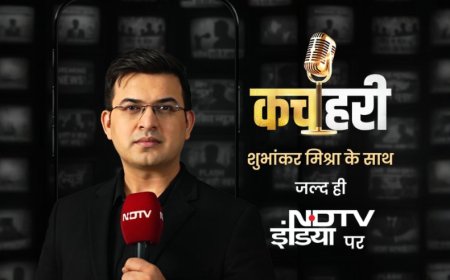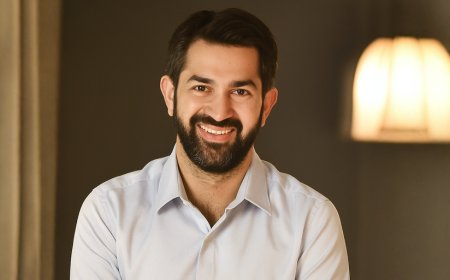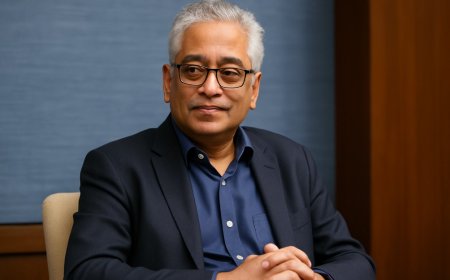Rajdeep Sardesai at 60: Reflecting on a Legacy of Bold Journalism and Sharp Storytelling
As Rajdeep Sardesai turns 60, we look back on his impactful journey in Indian journalism—from fearless reporting to newsroom leadership—and his enduring influence on public discourse.

At a time when the media landscape is evolving faster than ever, few names continue to stand tall as consistently as Rajdeep Sardesai. As he marks his 60th birthday, it’s not just a milestone of age—it’s a celebration of a career that has helped shape how India understands news, debates, and democracy.
For over three decades, Sardesai has been a central figure in Indian journalism. A storyteller, anchor, political commentator, and author—his voice has echoed across living rooms, newsrooms, and prime-time slots, becoming a part of how the nation processes both headlines and history.
From Law to News: A Career Born of Conviction
Though Sardesai began with a background in law and political science, journalism called to him early. After a stint with The Times of India, he joined NDTV where his presence on screen quickly made him one of the most recognizable faces of English-language news in India.
In 2005, he went on to become the founder-editor-in-chief of CNN-IBN, a venture that brought with it a fresh, contemporary approach to TV news. Under his leadership, the channel gained credibility for in-depth political coverage and strong editorial voices.
His journey has never been about just “breaking news”—it’s about breaking narratives, digging deeper, and giving viewers a layered understanding of events.
A Front-Row Seat to Indian Politics
Sardesai’s real-time coverage of Indian politics—elections, crises, protests, and parliamentary shifts—has earned him both admiration and criticism. But one thing is certain: he has always been in the thick of things, often where the story is unfolding.
From covering the Babri Masjid demolition and Gujarat riots to national elections and coalition dramas, he has offered not only information but analysis rooted in historical context and on-ground reporting.
His sharp interviews, tough questions, and firm editorial tone have made him a trusted (and sometimes controversial) figure—qualities that come with being a journalist who doesn’t shy away from holding power accountable.
Balancing the Studio and the Street
One of Rajdeep’s enduring strengths is his ability to move fluidly between ground reporting and studio anchoring. He’s as comfortable moderating a policy debate as he is capturing the pulse of a protest march.
This dual strength has allowed him to present news as a blend of immediacy and insight. For younger journalists, his career serves as a reminder that the best journalism requires both fieldwork and editorial clarity.
A Voice That’s Both Respected and Challenged
Over the years, Sardesai has built a reputation for being a fierce advocate of press freedom and democratic values. His stance often places him at the center of online debates and media scrutiny, but he has continued to defend the journalist’s role as the fourth pillar of democracy.
Whether one agrees or disagrees with his views, there’s little doubt that Rajdeep Sardesai has stayed committed to his principles, even as the tone and tempo of Indian media have shifted.
Author, Columnist, and Media Educator
Beyond television, Sardesai has extended his voice through books, columns, and lectures. His bestselling books like “2014: The Election that Changed India” and “Newsman: Tracking India in the Modi Era” reflect his eye for political change and journalistic evolution.
His columns often delve into the deeper implications of policies, public sentiment, and media responsibility. These writings have further cemented his reputation as a media intellectual and public educator.
Inspiring a Generation of Journalists
To many young reporters and media students, Rajdeep Sardesai remains a symbol of courage, resilience, and journalistic discipline. His ability to combine facts with narrative, emotion with evidence, and passion with precision makes his work both impactful and enduring.
He is frequently invited to speak at universities, journalism schools, and media forums, where he emphasizes the importance of truth, ethics, and empathy in newsrooms.
Rajdeep at 60: A Career Far From Over
Even at 60, Sardesai shows no signs of slowing down. He continues to anchor prime-time debates, break stories on social media, and challenge the shrinking spaces for honest journalism.
What’s inspiring is not just his stamina but his adaptability. In an age of reels, tweets, and rapid news cycles, Sardesai has maintained relevance without losing depth.
He continues to serve as a bridge between the traditional values of journalism and the demands of the digital era.
Conclusion: A Legacy Still Being Written
Rajdeep Sardesai’s journey is a testament to what journalism can be—principled, passionate, and persistent. At 60, he’s not just a veteran; he’s a standard-bearer for how journalism can evolve while staying rooted in ethics.
In celebrating his milestone, we also celebrate the enduring value of truth-telling, accountability, and the courage to speak up—values that have defined his career and continue to shape India’s media landscape.
Happy 60th, Rajdeep Sardesai—your voice still matters, and your story is far from finished.
What's Your Reaction?
 Like
0
Like
0
 Dislike
0
Dislike
0
 Love
0
Love
0
 Funny
0
Funny
0
 Angry
0
Angry
0
 Sad
0
Sad
0
 Wow
0
Wow
0









































